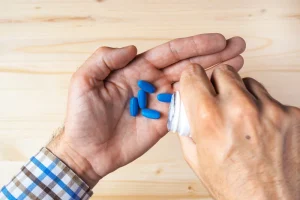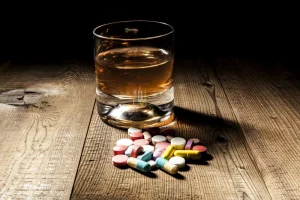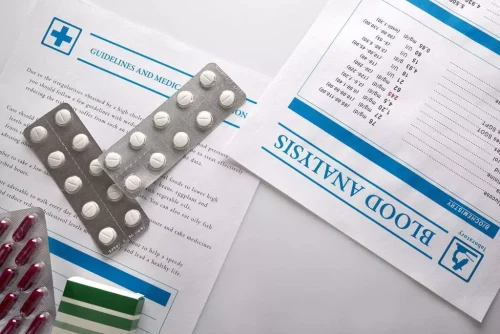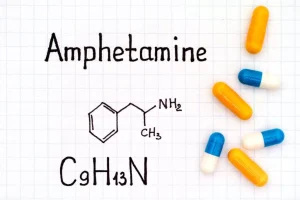It’s essential to recognize that psychological withdrawal symptoms can be more dangerous than physical ones. They can lead to suicidal thoughts or behaviors, and should therefore be managed with professional care during the recovery process. By incorporating medically assisted ecstasy antibiotics and alcohol detox with a robust psychotherapy programme, Castle Craig provides a comprehensive approach to treating the root cause of ecstasy addiction. This dual approach ensures that patients not only detox safely but also acquire the therapeutic tools they need for long-term recovery.
Get Connected to an Ecstasy Detox Program
During this time, they are given hydration and nutrients along with supportive medical care, so they can get through this phase much more comfortably. To give you a general guide, the common psychological and physical ecstasy withdrawal symptoms are listed below. MDMA (“Molly” or “Ecstasy”) withdrawal symptoms have not been extensively documented. Although most people use ecstasy on a recreational basis (e.g. once in awhile), there are some people that are more consistent with their usage. People who use Ecstasy often may actually become both psychologically and physically dependent upon this substance for everyday functioning. The reason more individuals are getting addicted to Ecstasy and experimenting with it is largely due to the cost.
Detox: Managing Ecstasy Withdrawal Symptoms
Therefore, proactive prevention and early treatment are key components in reducing MDMA addiction and withdrawal occurrences. MDMA withdrawal can be a challenging experience, marked by a range of physical and psychological symptoms. To manage these symptoms, therapeutic interventions play a crucial role.
Medical Detox for MDMA Withdrawal
- At Flagler, we offer a range of treatment options to assist individuals struggling with ecstasy addiction.
- A balanced diet rich in fruits, vegetables, lean protein, and whole grains can provide essential nutrients that aid in recovery.
- Understanding the timeline of detox from ecstasy and withdrawal symptoms is crucial for both users and healthcare providers.
- Dialectical-behavior therapy is a type of cognitive-behavioral therapy that focuses on mindfulness, how to live in the moment, how to cope with stress, and how to improve relationships.
- At Mandala Healing Center, we offer medical detox, evidence-based therapies, and relapse prevention planning to each of our clients.
Although less common than addiction to illicit drugs like heroin and cocaine, several reports indicate that ecstasy has a potential for addiction. Ark Behavioral Health offers 100% confidential substance abuse assessment and treatment placement tailored to your individual needs. If you or a loved one are suffering from MDMA withdrawal symptoms, it’s imperative that you seek treatment options as soon as possible. Withdrawal management services can also take place in outpatient settings, which involves living at home and attending detox sessions at a clinic. This option is best if someone is experiencing mild withdrawal symptoms or has a strong internal motivation to quit.
Participants who continue to abstain receive rewards such as prize draws for money or in-demand objects. PHP also involves counseling and group therapy as well as specialized services that focus on skill-building, relapse prevention, and employment assistance. These centers also vary in terms of their provision of amenities, which range from basic to luxury options. If you or a loved one struggles with drug use, reach out to one of our healthcare professionals today. Ecstasy is a drug that can easily cause problems due to the fact that it can contain additives such as ketamine, methamphetamine, and even bath salts. Sometimes those taking the drug are unaware of the other substances involved.
MDMA (Ecstasy, Molly) Drug Withdrawal Symptoms: What You May Experience
Being under the care of a medical detox program will make you less likely to experience a relapse. MDMA withdrawal is somewhat unique in that the psychological effects are more dangerous than the physical withdrawal symptoms. People overwhelmed with depression and hopelessness can act out in life-threatening ways, including returning to substance abuse or self-harm. When MDMA, also known as ecstasy or molly, aa meetings: what they are types and format schedule first appeared, people dismissed it as a party or club drug with no serious risks or long-term effects. As MDMA use became more widespread, researchers realized that ecstasy abuse causes dependence, lasting chemical changes, and intense and sometimes dangerous withdrawal symptoms. These symptoms typically manifest within 24 hours after the last MDMA intake and can persist for several days to a week.
While ecstasy is less dangerous to detox from than many drugs, it is not recommended that you do it alone. Individuals who experience intense anxiety and depression during detox are at risk of psychological complications. Long-term treatment also provides an opportunity for the individual to physically withdraw from ecstasy while they focus on their mental and emotional rehabilitation. Depending on the severity of the addiction, long-term treatment may be a good option especially as many programs address the underlying emotional causes of one’s drug abuse.
According to the National Institute on Drug Abuse (NIDA), the most common symptoms are psychological. We understand that each situation is unique and requires the utmost care. We develop individualized treatment plans to ensure you receive the care that works best for you.
Once most of the drug is out of the body, it is possible to start experiencing withdrawal symptoms. Our caring and compassionate specialists are eager to help you comfortably navigate this journey to recovery. Our individualized treatment plan, programs, and therapies may be a perfect match for you or your loved one. We provide onsite medical detox to keep you safe and supported through withdrawal while your body starts to recover with the help of freshly made gourmet meals and around-the-clock care.
Through a program of care designed to encourage change, a foundation is created that allows clients to find their higher purpose and reclaim their lives. You should begin experiencing withdrawal symptoms within 12 hours of your last dose of ecstasy. You might notice slight anxiety, feelings of depression, and a bit of fatigue. Medical professionals emphasize the necessity for increased awareness and education to prevent MDMA misuse and manage its long-term consequences effectively.
MDMA is most famous as a party drug on the rave and club scene but has gained wider use in the general population. Symptoms during the comedown are similar to those experienced during withdrawal, including anxiety, memory and attention choosing an alcohol rehab treatment program problems, decreased appetite, and reduced interest in sex. MDMA’s effects on norepinephrine, which can contribute to cognitive impairment and emotional excitation, further complicate its impact on the brain’s reward system.
During medical detox, the withdrawal process is monitored by physicians. They may prescribe non-addictive medications such as antidepressants to manage psychological symptoms like severe depression. The individualized treatment plans are tailored to address the specific needs of each person. They should take into account factors such as the frequency and duration of MDMA use, personal health, and co-occurring mental health conditions. MDMA withdrawal treatment focuses on providing support and care during the detoxification process. While there is no instant cure for the withdrawal symptoms, a structured approach to treatment can ease the transition and manage the symptoms effectively.
A balanced diet rich in fruits, vegetables, lean protein, and whole grains can provide essential nutrients that aid in recovery. Staying hydrated is also crucial, as dehydration can exacerbate withdrawal symptoms. Your body will be going through a lot during this period, and adequate rest can significantly aid in the healing process. RehabCenter.net is intended for educational purposes only and is not designed to provide medical advice of any kind.
Other slang terms come from creative combinations that sound similar to MDMA or ecstasy or reference its effects. MDMA is an abbreviation for the chemical compound 3,4-methylenedioxymethamphetamine; ecstasy refers to the pill or tablet form, and molly is slang for the pure powder form. Unfortunately, the word “pure” is misleading because dealers frequently add other drugs to their batches to make them cheaper and more potent, leading to unforeseen side effects and dangers.




























